The Colonial Sugar Refinery (CSR) complex was constructed in 1891 on the Glanville side of the Port River, immediately opposite Port Adelaide. During a century of operation, it manufactured refined sugar, treacle and golden syrup, primarily for markets in South Australia and Western Australia. The refinery was virtually destroyed by fire in 1926, but largely rebuilt within six months. During the latter half of the twentieth century, its buildings became an iconic aspect of the Port’s waterfront landscape and were popular subjects for contemporary artists and photographers. Two years after its closure in 1991, the CSR complex was demolished to make way for construction associated with the Newport Quays waterfront development initiative.
Origins
The land upon which the CSR complex was built was originally home to Kaurna people. In the 1850s, several Kaurna families camped on riverfront land located within the boundaries of Glanville Hall, the residence of Port Adelaide merchant Captain John Hart. Hart was a co-owner of nearby Hart’s Mill, and employed Aboriginal people to work within the mill complex, as well as on the Glanville Hall estate. Following Hart’s death in 1873, several of Glanville Hall’s Kaurna residents continued to live on the property, and some even took the surname ‘Glanville’. Ultimately, however, they were forced to move when the land was acquired by Colonial Sugar Refinery, Ltd. in 1890. Founded in Pyrmont (Sydney) in 1855, Colonial Sugar Refinery, Ltd. initially refined imported raw sugar for consumption in colonial New South Wales, but later expanded its market into other Australian colonies and established mills in Yarraville (Melbourne) and the Queensland towns of Homebush, Victoria and Goondi. By the time construction began on the facility at Glanville, the company had developed an overseas market and founded mills in Auckland, New Zealand and at Nanson, Vivia and Rarawai in Fiji.
Construction and Operation
Construction of the CSR complex at Glanville commenced at the beginning of 1891. The facility was built on a parcel of land that fronted the existing Glanville Wharf immediately north-west of the Jervois Swing Bridge. Several large corrugated metal structures were located on the site, including a massive open-plan storehouse capable of holding up to 10 000 tons of raw and refined sugar. The centrepiece of the complex was its four-storey brick refinery, which contained all of the necessary equipment for converting raw sugar to a refined product. Among the items housed within the refinery building were boiling pans, filters, vacuum pans and an assemblage of patented machinery imported from Glasgow, Scotland. The refinery’s octagonal chimney extended to a height of 126 feet (38 metres) and for many years was one of the Port’s most prominent landmarks. Production at the plant commenced on 3 November 1891 and effectively ended South Australia’s importation of refined sugar from the island of Mauritius.
Sugar was not shipped to Glanville in a raw state, but instead rendered into cane syrup at the Javanese plantation from which it originated. Upon arriving at the refinery, the syrup was mixed with charcoal and subjected to several filtration treatments that extracted impurities. As much as 200 tons of charcoal was manufactured on-site per week, and used in conjunction with locally-produced heating gas to boil the filtered sugar and complete the purification process. In its initial years of operation, the Glanville facility produced approximately 300 tons of refined sugar per week in five different grades. These included ‘old fashioned sugarloaf’, brewers’ crystals (used primarily in the fermentation of beer), and three different textures of ‘ordinary white crystal’ sugar for use in cooking and table service. By 1926, the refinery’s weekly refined sugar output had increased to 800 tons.
CSR operated its own fleet of vessels to transport cane syrup from its Javanese plantations to South Australia. In addition to steamers, the fleet included a small number of sailing ships, launches and smaller auxiliary craft. Port Adelaide was typically the first port-of-call for CSR vessels originating in Java, and a portion of the cargo was discharged there before the ships moved on to Melbourne and Sydney.
Balmoral Fire
On the night of 25 July 1901, smoke was observed issuing from the ventilators of the CSR-owned steel screw steamer Balmoral, which was tied up alongside the Glanville refinery’s wharf. The Newcastle-built vessel had arrived from Java on 23 July and was carrying approximately 3000 tons of sugar. The source of the smoke was soon identified as a major fire in the steamer’s amidships cargo hold, where approximately 1000 tons of sugar was stowed. Although the vessel’s crew quickly initiated firefighting efforts, and were soon joined by members of the Port Adelaide fire brigade, the blaze spread to additional cargo storage areas, as well as the ship’s chart room, pantry, storeroom and saloon. Adelaide newspaper The Advertiser reported that the sugar in the hold became ‘a liquid boiling mass’ at the height of the fire, and generated thick, acrid smoke that significantly hindered firefighting efforts.
Despite these challenges, the fire brigade eventually brought the blaze under control and completely extinguished it by the following morning. Although there were no casualties among the firefighters and members of Balmoral’s crew, the vessel itself suffered considerable damage and most of the cargo was either destroyed outright or rendered unusable. The cause of the conflagration was never positively identified, although some members of the officers and crew attributed it to ‘spontaneous combustion’ caused by heat generated from a small donkey engine boiler positioned immediately adjacent to the cargo hold.
‘Sugar Wharf’ Renovation
In 1909, the Glanville refinery’s existing timber wharf, known colloquially as the ‘Sugar Wharf’, was replaced with a new structure built (with the exception of wooden fenders) entirely of steel-reinforced concrete. The new wharf was 452 feet (138 metres) in overall length, and supported by six-ton concrete piles measuring 45 feet (14 metres) in length and 18 inches (0.46 metres) square. Each pile was driven over 20 feet (6 metres) into the river bottom, and the height of the wharf from the point of each pile to the deck measured 50 feet (15 metres). In an attempt to permit increasingly larger vessels access to the wharf, CSR dredged the riverbed and increased its frontage to a depth of 22 feet (7 metres) at low water. The renovated Sugar Wharf was the first reinforced concrete structure of its kind built in South Australia, and remained in service until 14 January 1971, when a burst water main on its landward side undercut supporting architecture and caused it to collapse.
Glanville Refinery Fire
On the evening of 24 February 1926, fire erupted in the raw sugar store at the Glanville refinery. According to a number of workmen who were in the vicinity of the store when the blaze began, the ‘whole huge stack of sugar seemed to burst into flame, like gunpowder’ and they were obliged to flee the scene in order to save their lives. Within a very short time, the fire ignited additional structures, including the refinery building, engine room, offices, laboratories and a treacle canning plant. The conflagration grew so rapidly and burned so fiercely that it was observed and acted upon by the Port Adelaide fire brigade long before the official alarm sounded.
Shortly after firefighters arrived at the refinery, the corrugated metal walls of the raw sugar store collapsed, revealing a burning stack of 17 000 tons of raw sugar that was approximately 35 feet (11 metres) high and covered an area measuring 100 feet (30 metres) by 50 feet (15 metres). Sugar heated by the fire melted into thick syrup that cascaded down the side of the stack in ‘rivulets of caramel’. Heavy rain began to fall at the height of the inferno, but did little to quell the blaze. To the contrary, it mixed with the molten sugar and increased its flow so that it poured into the Port River in torrents and flowed in a boiling stream along the railway line as far as Glanville Station. In the midst of the downpour the fire continued to generate so much heat that spectators who came to watch it reportedly dried their rain-drenched coats from a distance of more than 50 yards (46 metres) from the flames.
Firefighters were able to establish a position on the roof of the boiler house in the south-eastern corner of the facility, and from this vantage point directed their hoses at blazes in the engine room and refinery building. They were aided by a stiff south-westerly breeze, which blew sparks and embers generated by the fire away from other buildings and into the Port River. Two Adelaide Steamship Company coal hulks, Flinders and Candida, were berthed at the Sugar Wharf when the fire commenced, but were towed to safety by a tug that happened to be operating nearby. Notable for its absence was Fire Queen, a local ‘fire float’ (firefighting boat) that could have tackled the blaze with an abundant supply of Port River water had it not been retired from service in 1924. Officials later decried the lack of such a craft and observed that its presence ‘would have made an appreciable difference’ in combating the fire. Ironically, an updated version of Fire Queen was then under construction at the nearby engineering works of Messrs. Simes and Martin, and was ready for service by the latter half of 1926.
While fire crews weren’t able to extinguish structures that were already alight, they succeeded in checking the conflagration’s progress and saving the boiler house, charcoal house and chimney. In the meantime, valuable items including books, documents, laboratory equipment and tools were salvaged by refinery employees. One of these individuals, night watchman J. Dallow, was severely burned on both arms and was the fire’s only recorded casualty. He was treated on-site by night shift foreman F.J. Wisdom and survived his injuries.
Ultimately, firefighters could do little more than contain the inferno and allow it to burn out. The stack of raw sugar smouldered and burned for several days, and the torrent of melted sugar that flowed into the Port River was blamed for a mass die-off of marine life so severe that hulls of vessels operating in the Inner Harbour did not need to be cleaned of bio-fouling for two or three years afterwards. Acrid smoke and fumes generated by the blaze caused irritation to the eyes, lungs and skin of firefighters, refinery employees and local residents, and reportedly caused silverware in nearby houses to oxidise and turn black. For many years, Port residents affected by persistent respiratory and vision problems often attributed them to the ‘Refinery Fire’.
The cause of the blaze was never officially determined. Initial news reports stated that newly-installed electrical lines within the raw sugar store had ‘been giving trouble’ and appeared to have fused and served as an ignition source. However, refinery manager T.M. Ferguson was quick to refute these claims, reporting that none of the wires present in the store where the fire originated were live at the time because they had been shut off at the main. He went on to state that the blaze was reportedly first observed among some of the store’s roof timbers, and rapidly spread to a nearby stack of raw sugar.
Total losses attributed to the fire were estimated at £850 000. Of this amount, £100 000 applied to damage or destruction of refinery buildings and equipment, while the remainder (£750 000) was the estimated value of destroyed stocks of raw and refined sugar. Incredibly, only six months passed before most of the facility’s damaged or destroyed buildings were rebuilt or repaired and back in operation. However, many workers were without income while the plant was being rebuilt, and this coincided with the onset of the Great Depression. Consequently, the refinery fire had far greater long-term economic and emotional impacts on the Port than the short-term material losses would seem to indicate.
Final Years
Between 1950 and 1990, several alterations were made to the Glanville refinery. These included installation of a new boiler station and accompanying smokestack, and removal of the charcoal house and brick chimney. The plant’s power plant gradually evolved from boilers that were coal-fired to those powered by fuel oil and natural gas. Ultimately, the company opted to source its gas and electrical supplies from SA Power Networks, and the refinery’s engine room was closed. Pre-existing offices were expanded, and new buildings—including a warehouse and tank farm—were constructed in conjunction with comprehensive landscaping of the entire facility. Following the Sugar Wharf’s collapse in 1971 its use was discontinued, although it subsequently became a popular (albeit unsanctioned) mooring for pleasure craft. By the end of the 1980s, the refinery was largely obsolete and plans were initiated for its closure. It officially ceased operation on 26 April 1991, and was demolished two years later to make way for the Newport Quays waterfront development initiative.


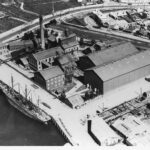

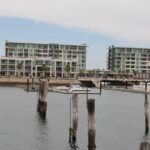
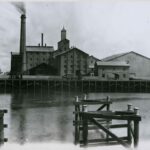
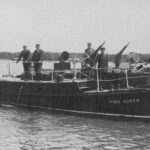
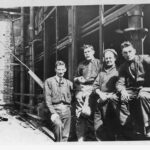
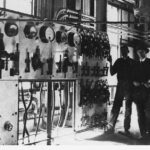
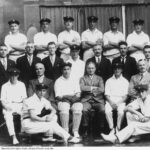
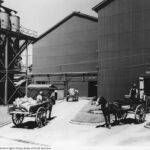
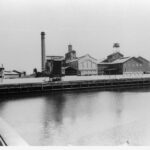
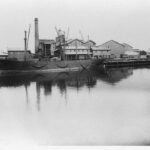
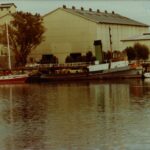
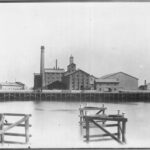
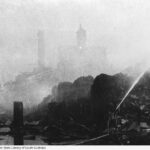
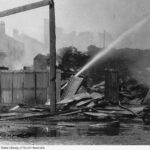
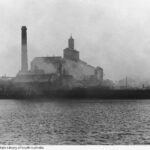
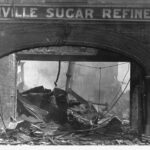
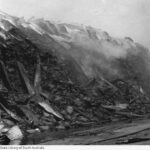
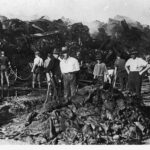
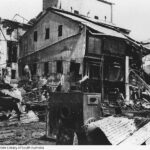
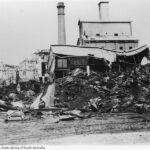

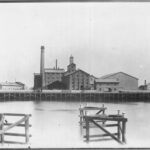
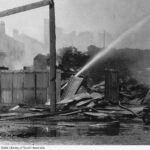
Comments
8 responses to “Colonial Sugar Refinery, Glanville”
Well written, I worked there for 10 years and I was a 4th generation employee. My great grand father was the night watchman J Dallow who was burnt in the fire in 1926
My father and grandfather were both employees.
What an amazing family connection Paul. I’ll pass on your kind comments to James who wrote this piece.
I have in my possession an engraved gold pocket watch presented to my Grandfather, an employee of the Sugar works for services in the great fire . My Grandfather John Heywood , his son Jack and brother George and his sons , Bill and Ken all worked at the Sugar works.
What a fantastic piece of history Robert. Would you be willing to share a picture here? If you click on the ‘add to’ button at the top of the page there is a web form you can fill out with a story and you can attach images through that.
My family lived very close to the Sugar Refinery (we lived opposite the Glanville railway station for 7 years). I fondly remember the ‘sugar works’ as we called it. I also remember the ketches?/schooners? tied up beside the refinery next to Jervois Bridge … these boats obviously brought in sugar cane and then freighted the refined sugar to other ports.
Thanks for documenting the history. My late uncle Peter Thorpe worked as an engineer here in the 1960s. I visited them from Sydney and remember riding a bike from their home in Larg’s Bay to the site with his son Steven to visit him. We got access which I’m sure you would not be able to do in these times.
Fantastic memories, thanks for sharing Michael.
I was looking for the date that the Sugar Works caught on fire as I had a question from a person on the following site that I am on.Port Adelaide, Rosewater, and Pennington (South Australia) Local History It was well before my time as I was born in Port Adelaide in 1946 but I remember my Mother telling me about it, she was ten years old at the time of the fire. It’s an interesting read too.. Lot of history in the Port Adelaide & it’s surrounds that’s for sure. regards Adrian.